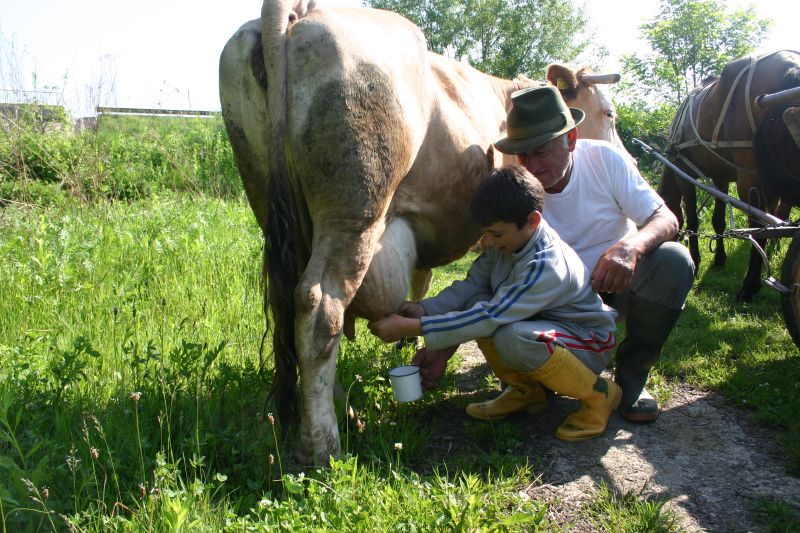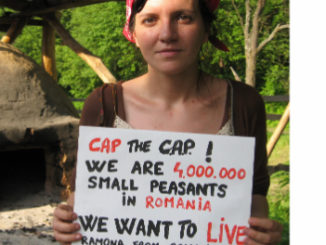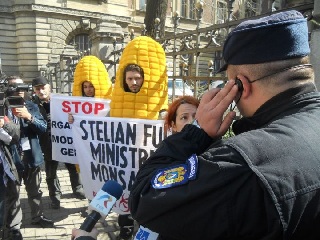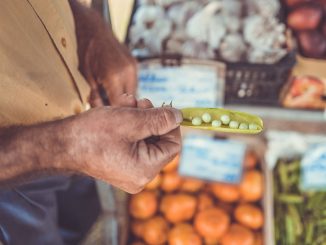Romanian peasants are used to praise their pastures. “It is pure milk and honey”, this is how one milk producer of Eco Ruralis used to pamper his fields, referring to the great biodiversity which nourishes his milk cows, offering quality milk day by day.

Unfortunately, due to recent international developments, like the ending of the EU milk quotas and the Russian embargo, he is no longer that optimistic. The pastures are still the same, but in a matter of a few months the milk market has changed radically, with far reaching effects on Romanian small producers.
Many are facing bankruptcy due to a perfect storm of EU high level decisions and a fragile geopolitical context. Private milk processing factories from the country are no longer buying local milk as neighboring countries are knocking at their doors with dumping-level prices.
Just the other day, in Timis county, milk farmers started to “bathe the pigs in milk” – a desperate way of saying that milk is being fed to them not knowing what else to do with it. Journalists are gathering desperate testimonials from this region: one farmer acquired 60 milk cows from Germany, using a bank loan. Now, as he can only sell a liter of milk at 0.11 Euro, he already sold 17 cows…while another one, a 23 year old young farmer which invested hard earned funds into on-farm cooling tanks, is not able to sell one drop of milk from them as processors look elsewhere.
Influenced by the speculative fluctuations of price, bad weather and the Russian embargo, multinational milk processing companies settled in Romania changed their strategy. Local contracts became stricter, prices were dropped and numerous conditions were set. Most of the farmers couldn’t comply so processors started to import massive quantities of milk from a “quota-less” EU market unable to sell its milk as literally convoys of milk were turned back from the Russian border. Analysts estimate that 30% of the EU milk production was “embargoed” like this. Where did this production end up? Swallowed up by the Eastern European processors, many from Romania.
In the south of Romania, tens of farmers organised protests in front of a processing factory which refused to take their milk, despite the fact they had a valid contract until late autumn. In the central counties of the country 2000 milk producers joined into protests against ridiculous milk prices and uncontrolled cattle and sheep exports. Their protest ended with the dumping of hundreds of liters of milk in front of the local authority buildings. According to them, their next stop is in front of Romania’s Governmental offices in Bucharest.
While multinational milk processing companies found their ways to cope with the situation, country statistics regarding milk processing units are more worrying: in 2014, a third of the Romanian milk processing factories closed due to lack of access to market. On the top of this, Eurostat figures place Romania almost at the bottom of milk consuming countries from the EU, with an average of 12 liters/person/year. In comparison, an Irish person consumes 145 litres a year, and a UK one 82 litres.
On the milk production side, 90% of the Romanian milk farmers own 1-3 cows with an average production per cow of 3860 liters, while in big milk producing countries like Germany or France, this figure goes up to 7000 liters/cow. From the 5 million tonnes of milk produced in Romania, only 1.3 million meets the EU quality standards.
During one farm visit, an Eco Ruralis producer drew a harsh image of a milk farmers life and history of struggle: during communist Romania, he had state quotas, according to which most of his production was taken away by the “former system”, in the early 90s’ he went back to subsistence in lack of access to land and affordable feed. He slowly started to produce for the regional market only to face the latest EU hurdles: unfair competition, dumping of the markets with foreign milk and lack of milk collecting facilities.
According to a press release by the European Coordination Via Campesina (ECVC), the crisis in the world of dairy farming is a clear sign of the failures of the current dairy policy. If policy makers want to maintain the many breeders and ensure a diverse and sustainable milk production that benefits consumers, a cultural revolution must take place.
The movement does not limit its demands to emergency measures such as postponing banking maturities, implementing an umpteenth support plan for export, providing additional funds for the promotion of dairy products or even greater spreading of penalties for exceeding quotas. ECVC is demanding sustainable solutions based on a dynamic management of European production for:
- Sustained prices above production costs
- neutralized intra-European competition
- Nisconnection of dairy product prices for the domestic market from those for the world market (only 10% of European production)
- A fairer distribution of milk production
- Protecting the most disadvantaged areas of the EU and for
- An immediate end to negotiations on free trade agreements (TTIP, CETA and others).
All over Europe, protests have occurred and in the end, a contentious and indeed stopgap E500 million emergency payment was put in place for dairy farmers. Romania is set to receive E11.15 million in this.
The question is: will this halt momentum towards a fairer milk regime, or will dairy farmers now start to organise themselves?
All Arc2020 articles on the Milk Crisis




